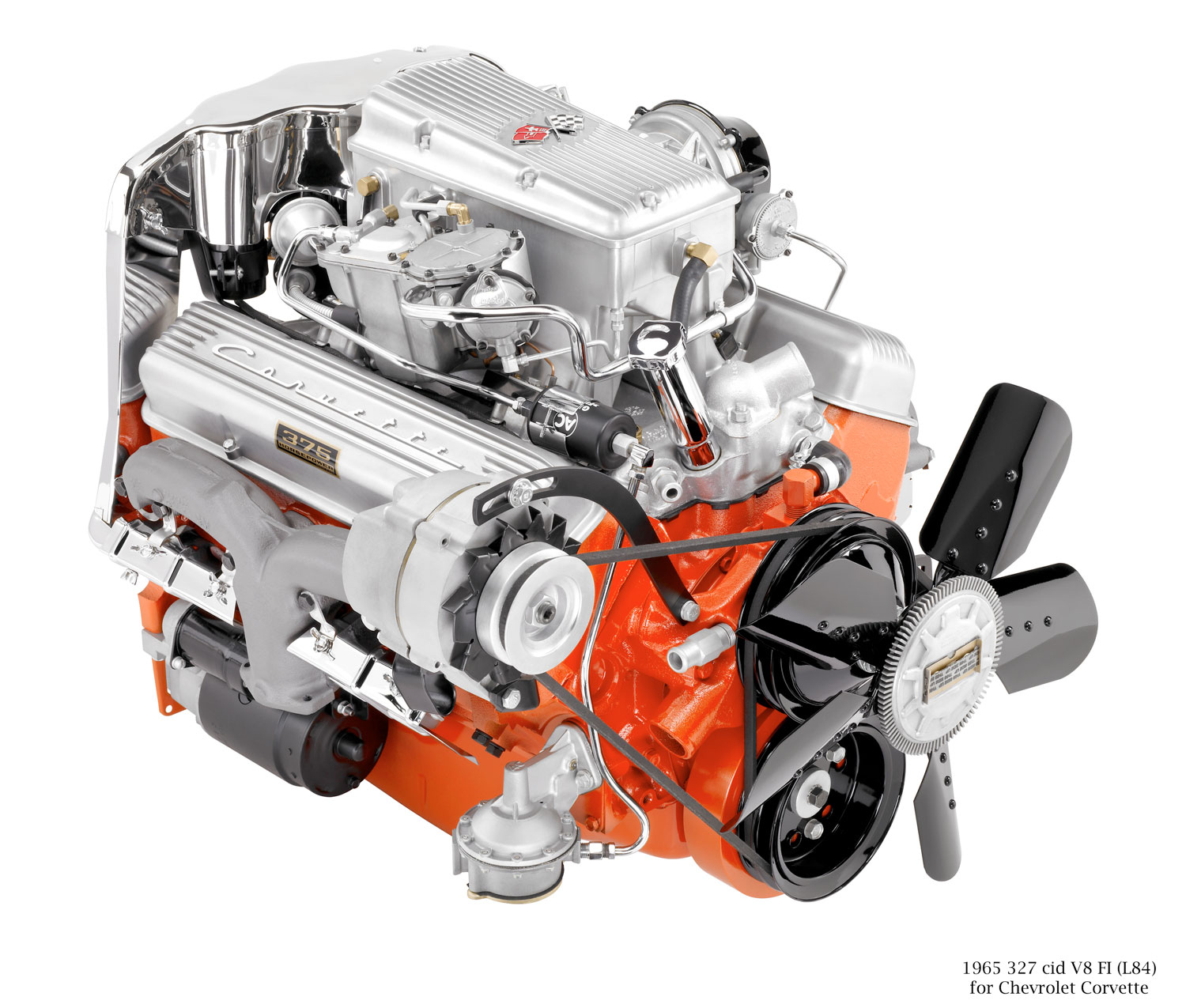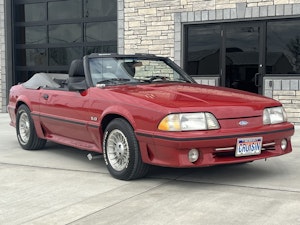Media | Articles
This 3/27, celebrate Chevrolet’s power-packed small-block
It’s March 27, also known as 3/27, and we thought it was high time to pay homage to one of the most well-known small-block displacements of all time. AMC debuted its 327 V-8 first, but it was the solid-lifter Chevy 327s that made the displacement famous. We’re going to highlight just a few iterations of the Bow Tie brand’s greatest small-blocks of all time and what made them so special.
The 327 debuted in 1962. It featured a 4.00-inch bore and a 3.25-inch stroke, increases of an eighth-inch and a quarter-inch, respectively, over the 283. It was available everywhere the 283 had been in 1961, which meant it went under the hood of all the full-size Biscayne, Bel Air, and Impala models, as well as the Corvette. The only Chevrolet cars that didn’t have it as an option for 1962 were the Corvair and Chevy II.
Both 250- and 300-horsepower versions of the 327 were available in the full-size Chevy cars, where it was overshadowed by the 409 W-motors. Still, at 300 horsepower it offered substantial power density and was potent enough that Chevrolet discontinued the 348 in passenger cars, including the 340-horsepower four-barrel and 350-horsepower 3×2 version. The fact that the 327 was more than 100 pounds lighter than the big-block 348 was a nice bonus as well.
Corvette also got the 250- and 300-horsepower 327 variants in 1962, but also 340-horsepower four-barrel and a 360-horsepower fuel-injected options, both with higher compression ratio (11.0:1) and the solid lifter “Duntov” cam that had been used on 283s since 1957.
For 1963, a new fuel injection intake manifold, arguably the best-looking ever installed on a Chevy small-block—the Z/28’s cross-ram is an also an acceptable alternative—debuted on the Corvette’s top engine option. At 360 horsepower, this new engine, L84 as it came to be known in Chevrolet RPO speak, continued to use the Duntov cam that was also used on the 340-horsepower L76 and its four-barrel Carter AFB carb.
Marketplace
Buy and sell classics with confidence

A new solid-lifter cam replaced the long-running Duntov bumpstick for 1964. Known as the “30-30” cam because of its hot lash setting for the intake and exhaust—in thousands of an inch—the new cam didn’t mean new engine codes, but it did add power. The L76 was now rated at 365 horsepower. Meanwhile the L84, the king of 327 small-blocks, now produced 375 horsepower with its new cam. That was a gross horsepower rating, but it would be the highest output ever claimed by a two-valve Chevy small-block until the 5.7-liter LS6 debuted in the C6 Z06 in 2001. The L85 would last through 1965, but the high-priced fuel injection option would end there, as the big-block took up the role of high-performance Vette powerplant.
The actual specifications of the 30-30 cam are up for debate, but various aftermarket manufacturers offer their own versions that claim to mimic the sound or/or performance. Comp Cams offers a duplicate 30-30 grind with 247/254 degrees of duration and .504/.498 lift, which is quite aggressive for a street-going 327. For comparison, a modern LT1 V-8 found in the Camaro SS uses a hydraulic roller cam with a duration of 200/207-degrees.
For 1965, Chevrolet introduced the L79 327. Rated at 350 horsepower with its four-barrel carb, it was the highest performance 327 available with a hydraulic roller cam. Considering the camshaft was only a few ponies down from the L76, the reduced maintenance from not having to periodically lash the valves must have been a revelation. The L79 327 turned the 1966 Nova SS into a pint-sized muscle car and served in various other Chevy cars through 1968 before it bowed out and the 350 took over.
Besides its series of performance camshafts, the secret to wringing 6,000-rpm power out of a 327 came down to its high-flowing cylinder heads. While they were used on plenty of high-performance 283, 302, 327, and 350 engines with carburetors, the heads earned the “fuelie” nickname for their use in the highest output small-block Corvettes.
The fuelie heads which, despite what Bruce Springsteen’s Racing in the Streets may tell you, simply won’t fit on a 396 big-block, were the go-to cylinder head for small-block racers for decades. Even when the L31 Vortec 350 came out offering the best factory iron small-block heads Chevrolet ever cast, nostalgic racers still clamored for the fuelie head. In the right engine builder’s hands, fuelie heads could be ported with truly impressive results. Their distinctive casting marks, frequently referred to as “camel hump” or “double hump,” was a telltale sign that savvy motorheads could spot in an engine bay and know that the engine had potential. The camel hump has been reproduced by Trick Flow in a modern aluminum casting so that engine builders can have modern performance with the proper vintage look.

Is there anything a 327 can do that a 350 can’t? Well, not really. The difference is that while the 350 soldiered on into the 21st century and powered emissions-choked wagons and pickups along the way, the 327 burned brightly for only a few years and then went away. So while not every 327 was a solid-lifter, fuel-injected beast, it has a connotation of ’60s high-performance while the tens of millions of 350s doing yeoman work tend to drown out the stellar LT-1 and short-lived LT4.
Since there’s no March 50th on the calendar, today is as good a day as any to celebrate the Chevy small-block. Besides, we think that every performance small-block built since then has a little bit of 327 DNA inside.











Incorrect information about the L-79. Indeed, it was everything that your article said, except that it was a flat tappet hydraulic cam, not a roller cam.
I caught that one too on the L79 roller cam I don’t think chevy had a roller cam until the 80s think sun 307 and 350 Olds had it in the late 70s
I caught that one too on the L79 roller cam chevy didn’t make roller cam until the 80s some Olds had them in the late 80s
Hello I’m building a 1954 Chrysler imperial that I’m interested in putting a 327 small block in it turn key. Could you please let me know what your options are for my build and price please I’m located in salt lake City Utah